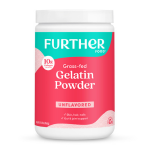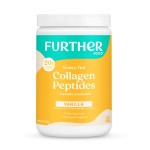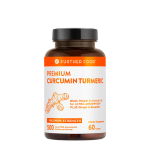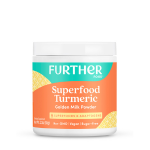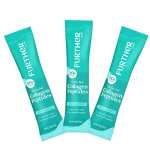My patient Shenna was excited. We were just beginning our first appointment, and she was hoping to finally resolve her symptoms and get off her medications.
Shenna had been diagnosed with lupus about six years ago. Lupus is a chronic inflammatory condition in which the immune system attacks a wide variety of the body’s tissues and organs, which can include joints, kidneys, skin, heart, lungs, brain, and blood cells. Before she came to see me, Shenna had been working with a conventional medicine doctor, who had prescribed her Plaquenil, one of the usual first-line drugs for her condition.
For most of those six years, Shenna had managed to lead a relatively normal life, although she often suffered from headaches, fatigue, and depression. Her doctor told her that all three symptoms were common side effects of lupus — caused either physically by the disease or psychologically by the challenges of living with a serious illness. In response, the doctor gave Shenna a prescription for Lexapro, a common antidepressant. Shenna wasn’t happy about the many problems she faced. Still, like so many people with autoimmune conditions, she didn’t think she had any other options.
Then Shenna had a new “flare”: the technical term for a lupus episode and also the term used with many autoimmune conditions when the symptoms suddenly get worse. Now she was suddenly also coping with chest pain, shortness of breath, joint pain, and unnerving bouts of memory loss. She couldn’t remember the names of people she had met, she forgot several familiar phone numbers, and she began having trouble finding where she had parked her car. In response, her doctor added another, more powerful medication: prednisone, a steroid typically ordered when lupus seems to be progressing. Shenna was hopeful that prednisone would help bring this flare under control. But after three months, it still hadn’t — and now she was facing a whole new set of side effects: weight gain, easy bruising, increased depression, and a blood pressure reading that had her primary care doctor worried.
Between her symptoms and her side effects, Shenna’s “normal” life turned into a constant round of missed work, canceled dinner plans, and anxious trips to the doctor. So she began to look for another way. A friend had forwarded her one of my newsletters, and Shenna checked out my website. She was inspired by the message of hope I offered — the prospect of a life without symptoms, medications, or side effects; a life of vibrancy, energy, and health.
So here we were in my office.
“I’m really hoping you can help me,” Shenna said softly, “but I’m not sure that anybody can. My grandmother had lupus too, and my mother has rheumatoid arthritis. I know autoimmune conditions are genetic, and I just feel like my genes have doomed me.” She shook her head, looking down. “The worst thing is that I have a twelve-year-old daughter. Given the way things have gone for the women in my family, it’s hard not to feel like she’s doomed too.”
“Shenna,” I said firmly, waiting until she looked back up at me, “I’m going to tell you something very important. Yes, you probably have a genetic predisposition to autoimmunity, but that’s only 25 percent of the story. The other 75 percent is up to you. Which means that you can turn things around for yourself, and you can likely keep your daughter from ever having to face what you’ve gone through.”
I pointed to the thirty-page intake form that I ask all my patients to fill out, with detailed questions about every aspect of Shenna’s life.
“We are going to determine how your autoimmune condition developed,” I told her, “and all this information is going to help us figure that out.”
“Yeah, there really were a lot of questions. None of my doctors have ever asked me about any of those things,” Shenna said. “You even asked me whether I was breast-fed or bottle-fed and if I was born by C-section. I’m so curious. What does that have to do with being autoimmune?”
“You didn’t get lupus overnight,” I pointed out. “Your inflammation must have been building up for a long time. In fact, that C-section and that bottle-feeding I asked about might have a lot to do with your health right now.”
And so Shenna and I began putting her story together. As always, I focused on two questions:
How had Shenna’s gut health been compromised?
How had that created problems for her immune system?
Shenna had been born by caesarean section, which meant that she had been taken by the attending doctor right from her mother’s womb, rather than passing down the birth canal. Why was this significant? Well, in order to function properly, your gut relies upon trillions of bacteria that live within your intestines and elsewhere in your body. You actually have ten times more microbial cells than human cells.
You weren’t born with these friendly bacteria. Instead, you begin to acquire them from your mother during your passage down the birth canal. Babies who are born by C-section often miss out on some crucial bacteria — bacteria that are vital to good gut health.
Shenna started out with a deficit of friendly bacteria, so that was our first clue as to what went wrong:
Clue One: Missing Out on Friendly Bacteria in the Birth Canal
Shenna also told me that her mother had difficulty breastfeeding, so she needed to feed Shenna by bottle instead. Breast milk is a second crucial source of friendly bacteria for newborns and infants, along with some key immune factors. By being bottle-fed, Shenna missed out on these two crucial supports . . . and moved a little further up the autoimmune spectrum.
Clue Two: Missing Out on Friendly Bacteria and Immune Factors from Breastfeeding
These early problems almost certainly affected Shenna’s health as a child and likely contributed to her frequent ear infections. Shenna also shared with me that many of her favorite childhood foods were dairy products: yogurt sweetened with fruit for breakfast, a buttery grilled-cheese sandwich for lunch, a sweet bowl of ice cream for a nightly dessert, a glass of warm milk at bedtime.
My inner detective jumped into high gear. Ear infections are frequently a sign of food sensitivity, specifically sensitivity to dairy. If you have food sensitivity, by definition you have a leaky gut, which I inferred had been caused by the lack of friendly bacteria that Shenna was missing as the result of her birth and bottle-feeding.
Let’s talk about this. In response, Shenna’s immune system might have decided early on that milk was a dangerous toxic invader and created antibodies to target dairy products, with three likely effects:
-
Every time Shenna ate any product that contained milk — including baked goods, pancakes, and French toast — her dairy antibodies cued her immune system, which flooded her body with inflammatory chemicals. These chemicals produced a whole slew of side effects — including ear infections.
- Shenna’s system was now full of “casomorphins,” found in all dairy products. Many people have a gene that causes these substances to enter their morphine receptors, so that dairy products act in a very similar way to morphine: You feel great when the dairy is in your system, and you go through withdrawal when you try to give it up. Shenna seemed to have these receptors, because if she went even a couple of days without eating milk, cheese, yogurt, or ice cream, she began to feel irritable, tired, and “desperate for dairy.” So Shenna kept eating dairy — and her inflammation became chronic.
- This chronic inflammation further contributed to leaky gut. This stressed Shenna’s immune system even more, pushing her further up the autoimmune spectrum.
Clue Three: Frequent Ear Infections = Likely a Dairy Sensitivity
Shenna’s ear infections had another important effect: She was treated for them with antibiotics. While antibiotics have many important uses, they also have one very problematic side effect: They kill off your friendly bacteria, which, as you just saw, can lead to leaky gut, chronic inflammation, and more stress for your immune system. By creating leaky gut, antibiotics can also indirectly affect your brain function. That’s because of a relationship most conventional doctors aren’t aware of but that is one of the basic premises of functional medicine: the gut–brain connection. When you take antibiotics, you kill off good bacteria in your intestines, which can lead to yeast overgrowth. Yeast likes to spread out in a layer over the inside of your gut. Your gut produces 95 percent of your serotonin, the feel-good chemical your brain uses to combat depression and anxiety, ensure good sleep, keep your moods level, and produce feelings of optimism, calm, and self-confidence.
The yeast layer seriously affects the production of neurotransmitters, so continued use of antibiotics goes on to mess with both your immune system and your brain, leaving you vulnerable to brain fog, anxiety, depression, and memory problems.
Clue Four: More Friendly Bacteria Destroyed by Antibiotics
As we kept talking, Shenna’s current problems came into focus. Perhaps, I suggested, her depression, memory loss, and brain fog were not only side effects of the lupus or the prednisone. Very likely they were also the results of her long-standing yeast overgrowth infection.
When Shenna hit puberty, she developed a severe case of acne, a problem that lingered well into her late twenties. Since acne is a common side effect of dairy sensitivities, we had found another clue. To make matters worse, Shenna took antibiotics to help clear up her acne. That destroyed still more friendly bacteria — and made her yeast overgrowth even worse.
Meanwhile, the teenage Shenna was eating a diet high in sweets and starches — lots
of sugary baked goods and desserts — which were just the right foods to nourish the unfriendly bacteria lurking in her gut. As a result, she developed a condition known as “small intestine bacterial overgrowth,” or SIBO, which gave her gas and bloating.
At this point I’d like you to think of Shenna’s gut as a jungle, where the law is survival of the fittest. An epic battle is going on between the friendly bacteria on the one hand and the yeast overgrowth and unfriendly bacteria on the other. Thanks to the many factors we have identified — going all the way back to Shenna’s birth and continuing through her childhood and teenage years — the friendly bacteria were losing that battle, while the yeast overgrowth and unfriendly bacteria were taking over the jungle. As a result, Shenna was setting herself up for a whole host of problems, including leaky gut, depression, brain fog, and memory loss.
Clue Five: Acne = Dairy Sensitivity
Clue Six: Antibiotics → More Friendly Bacteria Destroyed → Yeast Overgrowth
Clue Seven: High-Sugar Diet → SIBO
In college, Shenna started having problems with acid reflux, especially as a semester would near its end and a stressed-out Shenna felt the pressure of deadlines and exams. Most people — including most conventional medicine doctors — believe that acid reflux results from too much acid. Actually, acid reflux more often results from not enough acid, a problem that can result from stress, poor diet, or, again, a lack of friendly bacteria.
When you don’t have enough stomach acid, you can’t fully digest the proteins you consume. Instead of moving from your stomach into your small intestine, your undigested food sits in your stomach longer than it’s supposed to. Sometimes that undigested food backs up into your esophagus, along with small quantities of acid. The acid burns, and you get acid reflux. But if you had had more acid in your stomach in the first place, your food would have kept moving, and you wouldn’t have had the reflux.
Your stomach acid is supposed to break down the proteins you digest into much smaller molecules called amino acids, chemicals that your body needs to run virtually every cellular reaction in the body, as well as build muscle, give you energy, and create neurotransmitters, those all-important brain chemicals. So, I told Shenna, her low stomach acid had four troubling effects:
- It gave her acid reflux;
- it kept her from properly digesting her proteins, which deprived her of amino acids, which ultimately contributed to her fatigue and immune issues;
- it kept her from making enough neurotransmitters, which worsened her brain fog, depression, and memory loss; and
- it failed to protect her from any unfriendly bacteria and parasites that might be hitching a ride on her food, setting her up for yeast overgrowth and SIBO.
Clue Eight: Acid Reflux = Low Stomach Acid Depression, Brain Fog, Fatigue, and Many Other Problems
Like many people, Shenna frequently took acid blockers to fight her reflux. However, acid blockers destroy both stomach acid and key enzymes that your system needs to digest food properly. So Shenna’s attempts to solve her acid reflux were actually making that problem worse.
Clue Nine: Acid Blockers = Intensified Digestive Issues, Brain Problems, Yeast Overgrowth, and a Vulnerability to Parasites
Shenna was amazed to learn how far along the autoimmune spectrum she had progressed before she even turned eighteen. But we weren’t done yet. Also in college, Shenna told me, she had started taking the birth-control pill, a medication she still relied on. She also told me that she suffered from frequent vaginal yeast infections.
I saw a clear connection between these two seemingly unrelated facts. All those years of being on the pill had raised Shenna’s estrogen levels. The estrogen was feeding the yeast overgrowth in her gut, which went on to manifest in the form of vaginal yeast infections. In addition, the systemic yeast overgrowth decreased Shenna’s ability to make neurotransmitters (setting her up for depression, brain fog, and memory problems), contributed to her leaky gut, and depressed her immune system.
Meanwhile, in yet another vicious cycle, the excess yeast in Shenna’s system craved sugar . . . causing Shenna to crave sugar too . . . leading her to eat the sweet and starchy foods that created SIBO and fed her yeast . . . which caused her to crave even more sugar. As a result, Shenna gained weight. Her excess body fat was yet another source of inflammation . . . which is often a cause of weight gain . . . leading to yet more inflammation . . . and on the cycle goes, becoming more and more vicious with each passing year.
Clue Ten: Frequent Yeast Infections = Yeast Overgrowth, Probably Caused by Birth-Control Pill
Clue Eleven: Yeast Overgrowth Sugar Cravings Weight Gain More Inflammation, and More Digestive and Immune Problems
Ultimately, for Shenna, the inflammatory burden became too great. Her overstressed immune system went rogue, and she developed lupus.
Solving the Puzzle
Now that we had all the clues, it was time to put them together.
- Infancy: missing out on key friendly bacteria
- Childhood: ear infections (dairy sensitivity); killing off friendly bacteria (antibiotics); developing yeast overgrowth (antibiotics)
- Adolescence: acne (dairy sensitivity); killing off more friendly bacteria (antibiotics); developing more yeast overgrowth (antibiotics); SIBO (high-sugar diet)
- College: high estrogen, yeast infections, bacterial overgrowth (birth-control pill); reducing stomach acid and digestive enzymes (acid blockers)
All These Factors → Leaky Gut → Depression, Brain Fog, Autoimmune Spectrum → Lupus
Shenna was amazed to learn about all the different ways her diet, lifestyle, and history had set her up for an autoimmune disorder. “You mean if I had taken care of some of these problems differently, I could have prevented my lupus?” she asked me.
I knew exactly how Shenna felt, because that was my reaction when I discovered functional medicine and realized that my thyroid ablation had been unnecessary. It was exciting to find a new way to treat my Graves’ disease, but it was upsetting to think that it all could have been prevented if only I had known.
“Look,” I told Shenna, “you might have been able to reverse this journey and get off the autoimmune spectrum if you had known about this approach. But I don’t want you to blame yourself. You did what your other doctors told you, and until now, you never knew any other way. All you can do is the best you can with the knowledge that you have at the time.”
Shenna nodded slowly, taking this in.
“The good news,” I continued, “is that by the time we’re done with this appointment, you’re going to know exactly how to turn things around. Following The Myers Way gives you the power to reverse your condition and prevent any future autoimmune disorders. It also gives you the knowledge to protect your daughter and to help her prevent getting an autoimmune disease later in life.”
The 4Rs: Four Steps to Gut Healing
“Okay, now I see how my gut problems have set me up for lupus,” Shenna told me. “But what’s the solution?”
Luckily, I told her, functional medicine has developed a very effective protocol to heal and protect your gut: the 4Rs. The name comes from the four key steps: remove, restore, reinoculate, and repair.
Step One: REMOVE the Bad
The first step is to remove anything that disrupts the environment of your GI tract or contributes to your leaky gut. The Myers Way protocol has you remove inflammatory foods, including gluten, grains, legumes, dairy, sugar, nightshade vegetables, and eggs, as well as processed foods, additives, and preservatives. You also remove alcohol, caffeine, and as many medications as possible, because these are likely to stress or irritate your gut. Finally, you’ll remove intestinal infections such as yeast, parasites, and small intestine bacterial overgrowth (SIBO), all of which can wreak havoc on your gut as well.
The number-one food to remove is gluten, a protein found in wheat, rye, and other grains. Gluten appears in pasta, bread, pancakes, waffles, and baked goods. In my opinion, it is the number-one health hazard in America.
For Shenna, it was also crucial to get rid of dairy, the problem food that had caused her ear infections and probably also her acne. Cutting out gluten and other inflammatory foods would help heal Shenna’s gut and reverse her lupus too. Shenna also needed to clear up the bacterial overgrowth from her SIBO and her yeast infection. Using natural supplements and probiotics — capsules and powders that contain friendly bacteria — I helped Shenna get rid of the unfriendly bacteria and replenish her friendly bacteria. Since the birth-control pills Shenna took had probably contributed to this problem, I worked with Shenna to find another form of birth control.
Step Two: RESTORE the Good
Once the bad is out, it’s time to bring back the good. In this step, you restore the essential ingredients for proper digestion and absorption that might have been depleted by diet, medications, disease, or aging.
Adding back in digestive enzymes in supplement form is one key component of this step. Without these enzymes, you don’t digest your food properly, which stresses your digestive system and leaves you undernourished. “ ‘You are what you eat’ isn’t quite accurate,” I always tell my patients. “Really, the saying should be ‘You are what you digest and absorb.’ ”
Adding digestive enzymes also restores stomach acid, if needed, since those acids are required for proper digestion. Shenna realized that this was a crucial step for her, because it would help heal her acid reflux while lightening the load on her gut. Restoring stomach acid meant that Shenna could properly digest her food, absorb her nutrients, and use those nutrients to make all the neurotransmitters she needed. Proper digestion and absorption would also support Shenna’s immune system.
Step Three: REINO CULATE with Healthy Bacteria
Because of her delivery by C-section and her lack of breast milk as an infant, Shenna had probably started life with a deficit of friendly bacteria. The antibiotics she got for her frequent ear infections, and later for her acne, likely knocked out most of whatever friendly bacteria she had left.
The solution? Probiotics: capsules and powders that replenish your army of friendly bacteria so it can protect you from the world around you — and from yourself. Even if you had a normal delivery and were breastfed as a child, you are subject to all the other factors that deplete friendly bacteria, including toxins, poor diet, and stress. So I want you taking probiotics too.
Step Four: REPAIR the Gut
Like Shenna, most of us suffer from leaky gut. We need to repair that gut wall lining, which we can do through supplements. One of my favorites is L-glutamine, an amino acid that helps to rejuvenate the gut wall lining. Omega-3 fish oils help decrease your inflammation. In addition, licorice root and aloe vera help soothe your gut and cool your inflammation, allowing your gut to heal more quickly.
Why Does The Myers Way Work So Quickly?
Shenna was excited to get started on the 4Rs, but she was puzzled about why such seemingly simple steps could work so quickly. There are two reasons for this, I told her. The first is that many of her symptoms were not caused by her autoimmune condition but by her poor gut health. Healing the gut would enable her to get rid of lots of symptoms quickly, even if reversing the autoimmune condition took somewhat longer.
Second, gut cells are renewed at an incredibly fast rate. Every cell in your body has a specific life, after which it dies and is replaced by a new cell. Gut cells live only a few days at most. On the one hand, this means that you need to constantly support your gut, with healthy foods and especially healthy fats, which your body uses to make new cells. On the other hand, the quick cell turnover means that you can make big changes in a relatively short time, because old unhealthy cells are replaced by newer healthy ones.
Shenna liked thinking about how dynamic her gut was — to envision it as a living system that needed to be nourished and cared for.
“If I feel like eating something that isn’t on The Myers Way,” she told me during our second appointment, “I just picture what it will do to my gut, and that helps me to stay on course.”
From Gut Health to Total Health
Once Shenna understood how important her gut health was, she felt highly motivated to follow every aspect of The Myers Way. She was encouraged to see that her symptoms began to decrease within her first week of the new diet. Within a month, she was able to function without medications, her autoimmune markers had begun to normalize, and her health continued to improve.
Shenna was also excited to get her daughter on The Myers Way. She had such success reversing her own condition that she was now confident the same protocol would protect her daughter, even if her daughter had inherited Shenna’s genetic predisposition to autoimmune disorders.
“I just wish I had known about all these gut stressors earlier,” she told me during her last visit. “But the good thing is now I can help my daughter take the healthy path — and hopefully protect her from ever developing an autoimmune disease!”
Excerpted with permission from The Autoimmune Solution by Amy Myers, MD.
Want more? You might also like:
My Nourishing Three Day Meal Plan For Living With Lupus, Fibromyalgia and Multiple Autoimmune Conditions
Lupus Left Me in a Wheelchair. I Fought Back to Walk Again. Now, I’m the Reigning Mrs. New York
Mrs. New York’s 3-Day Food Journal of Lupus Fighting Meals
I Conquered Lupus. 3 Lessons Learned from My Elimination Diet
My Story: Changing My Diet Got Me Off My Lupus, PCOS, & Hypothyroidism Medications
Note: PLEASE consult with your doctor before making any changes to your diet or medications. The material on this site is provided for educational purposes only, and is not to be used for medical advice, diagnosis or treatment.
Ready to cut sugar out from your life? Take the #SugarPledge and sign up for our FREE 7-Day Sugar Detox Challenge
BE HEALTHY EVERY DAY with Further Food Collagen Peptides! Collagen heals your body from the inside out. Learn more here!










